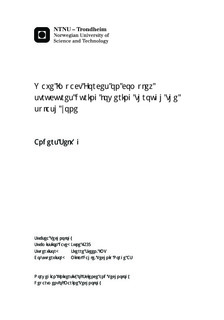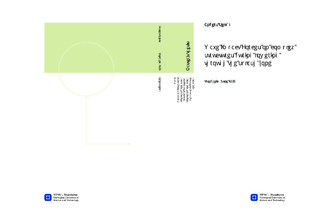| dc.contributor.advisor | Steen, Sverre | nb_NO |
| dc.contributor.advisor | Dahle, Mikal | nb_NO |
| dc.contributor.author | Selvåg, Anders | nb_NO |
| dc.date.accessioned | 2014-12-19T12:21:04Z | |
| dc.date.available | 2014-12-19T12:21:04Z | |
| dc.date.created | 2013-09-16 | nb_NO |
| dc.date.issued | 2013 | nb_NO |
| dc.identifier | 648669 | nb_NO |
| dc.identifier | ntnudaim:9080 | nb_NO |
| dc.identifier.uri | http://hdl.handle.net/11250/240899 | |
| dc.description.abstract | New oilfields are discovered further from land, at great depths and in harsh environments. Subsea developments of such fields are economical and preferred choice for operators today. One of the challenges is to process the well stream subsea. Statoil are continuously developing the technology and are going to launch the world?s first subsea processing facility, the Åsgard Subsea Compression station. This facility requires maintenance and repair even in rough weather, to avoid economic losses. For marine operations dedicated to this task, dynamic responses are crucial in order to assess the safety level during lifts and work on deck.The main objective of this thesis is to reduce the uncertainties related to numerical analysis of the wave impact process on the subsea compression modules. The wave impact on complex structures is in reality a complicated process considering the wave kinematics and the involved forces. Two programs, SIMO and Orcaflex, have been used to give an estimation of forces involved in the wave impact process on the complex compression module. A model test focusing on the splash zone crossing phase was proposed and approved. The aim is to estimate the actual maximum forces in the splash zone and compare the forces against results obtained from the numerical simulations. The module was subjected to regular waves using three environmental conditions in four different elevations.The numerical comparison between SIMO and Orcaflex shows that the main differences occur when the structure is suspended above the mean sea level. In these elevations the slamming forces are large which is believed to be the root cause of the observed differences. Orcaflex?s and SIMO?s calculation of slam forces are different and will give different results.The comparison between the model test and the numerical analysis in SIMO and Orcaflex indicates that the numerical prediction of forces is conservative in most cases. In cases where the numerical models were not conservative, the involved forces are not very large and that the model test wave was not representing the regular wave theory in a sufficient way.The comparison of forces in elevation 1 & 2 proved that Orcaflex?s estimation of slam forces are conservative, when the slamming coefficient is based on slamming tests. The slamming forces in SIMO gives a good estimation of the forces compared to the model test results. As the modules are submerged the slam forces are less governing and Orcaflex?s estimation is in many cases closer to the forces obtained in the model tests compared to SIMO. | nb_NO |
| dc.language | eng | nb_NO |
| dc.publisher | Institutt for marin teknikk | nb_NO |
| dc.title | Wave Impact Forces on complex structures during lowering through the splash zone | nb_NO |
| dc.type | Master thesis | nb_NO |
| dc.source.pagenumber | 123 | nb_NO |
| dc.contributor.department | Norges teknisk-naturvitenskapelige universitet, Fakultet for ingeniørvitenskap og teknologi, Institutt for produksjons- og kvalitetsteknikk | nb_NO |

